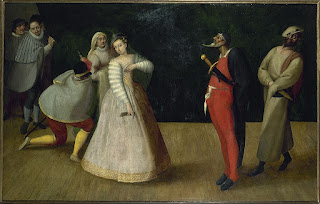Silvio Piola - footballer
Modest star who remains Italy’s greatest goalscorer
Silvio Piola, a forward whose career tally of 364 goals between 1930 and 1954 remains the most scored by any professional player in the history of football in Italy, was born on this day in 1913 in Robbio Lomellina, a small town about 50km (31 miles) southwest of Milan. Of those goals, 274 were scored in Serie A and 30 for the Italian national team, with whom he was a World Cup winner in 1938, scoring twice in the final against Hungary. No other player has scored so many goals in the top flight of Italian football and only two others - Gigi Riva and Giuseppe Meazza - have scored more while wearing the azzurri shirt. Other records still held by Piola include all-time highest Serie A goalscorer for three different clubs - his hometown club Pro Vercelli, Lazio, and Novara - and one of only two players to have scored six goals in a single match. Until recently, Piola held a unique double record of being both the youngest player to score two goals in a Serie A match and the oldest, having scored twice for Pro Vercelli in a 5-4 win away to Alessandria in 1931 when he was 17 years and 104 days and twice for Novara against Lazio in a match in 1953, at the age of 39 years and 127 days. Read more…
____________________________________
Silvio Berlusconi - entrepreneur and politician
Businessman who was four times PM
Silvio Berlusconi, who has served as prime minister of Italy in four Governments, was born on this day in 1936 in Milan. Head of a large media empire and owner of the football club AC Milan, Berlusconi was prime minister for a total of nine years, making him the longest-serving post-war prime minister and the third longest-serving since Italian unification. Berlusconi was the eldest of three children born to a bank employee and his wife and, after completing his secondary school education, he studied Law at the Università Statale in Milan, graduating with honours in 1961. While at University he played the double bass in a group and occasionally performed as a cruise ship crooner. In later life he was to co-write both AC Milan’s and Forza Italia’s anthems and, in collaboration with Mariano Apicella, a Neapolitan singer and musician, he wrote the lyrics for two albums of Neapolitan-style songs, which Apicella put to music. In the late 1960s, Berlusconi’s company, Edilnord, built 4,000 residential apartments in a new 'town' he called Milano Due and he was able to use the profits to fund his future businesses. Read more…
___________________________________
Enrico Fermi – nuclear physicist
Scientist from Rome who created world’s first nuclear reactor
Enrico Fermi, who has been called the architect of the nuclear age and even the father of the atomic bomb, was born on this day in 1901 in Rome. Fermi, who won a Nobel Prize in 1938, created the world’s first nuclear reactor, the so-called Chicago Pile-1, after he had settled in the United States, and also worked on the Manhattan Project, which was the code name for the secret US research project aimed at developing nuclear weapons in the Second World War. The third child of Alberto Fermi, an official in Italy’s Ministry of Railways, and Ida de Gattis, a school teacher, Fermi took an interest in science from an early age, inspired by a book about physics he had discovered in the local market in Campo de’ Fiori in Rome, written in Latin by a Jesuit priest in about 1840. He read avidly as he was growing up, conducting many experiments. After high school, he was granted a place at the prestigious Scuola Normale Superiore, part of the University of Pisa, where it became clear the depth of knowledge he had already acquired was greater than that of many of his professors. It was not long before they began asking him to organise seminars in quantum physics. He graduated with honours in 1922. Read more…
_______________________________________
Giorgio Frassineti - politician
Mayor who proposed museum of Fascism
Giorgio Frassineti, the politician famous for proposing a museum dedicated to Fascism in Predappio, the birthplace of Benito Mussolini, was born on this day in 1964 in Forlì in Emilia-Romagna. A member of the centre-left Partito Democratico, Frassineti served as mayor of Predappio from 2009 to 2019. Predappio, around 18km (11 miles) south of Forlì, has a population of less than 6,500 and is not on the tourist trail. Apart from by private car, it is accessible only by bus from Forlì, which is a pleasant small city but one that tourists mainly pass through on the way to Rimini and the Adriatic coast. Yet 50,000 visitors a year descend on Predappio, mainly to visit the house where Mussolini was born in 1883, or the family mausoleum where his body was laid to rest following his execution by Italian partisans in 1945. Despite his World War Two alliance with the Nazi leader Adolf Hitler, Mussolini is still admired by some Italians and Predappio’s main street has shops that openly sell Fascist memorabilia, in part a cynical exploitation of the village’s evolution as a place of pilgrimage for Mussolini supporters, but in part also a reflection of the country’s more ambivalent attitude towards his memory. Read more…
Booking.com.jpg)
.jpg)







.jpg)

%20(1).jpg)


_-_2021-08-28_-_2.jpg)
